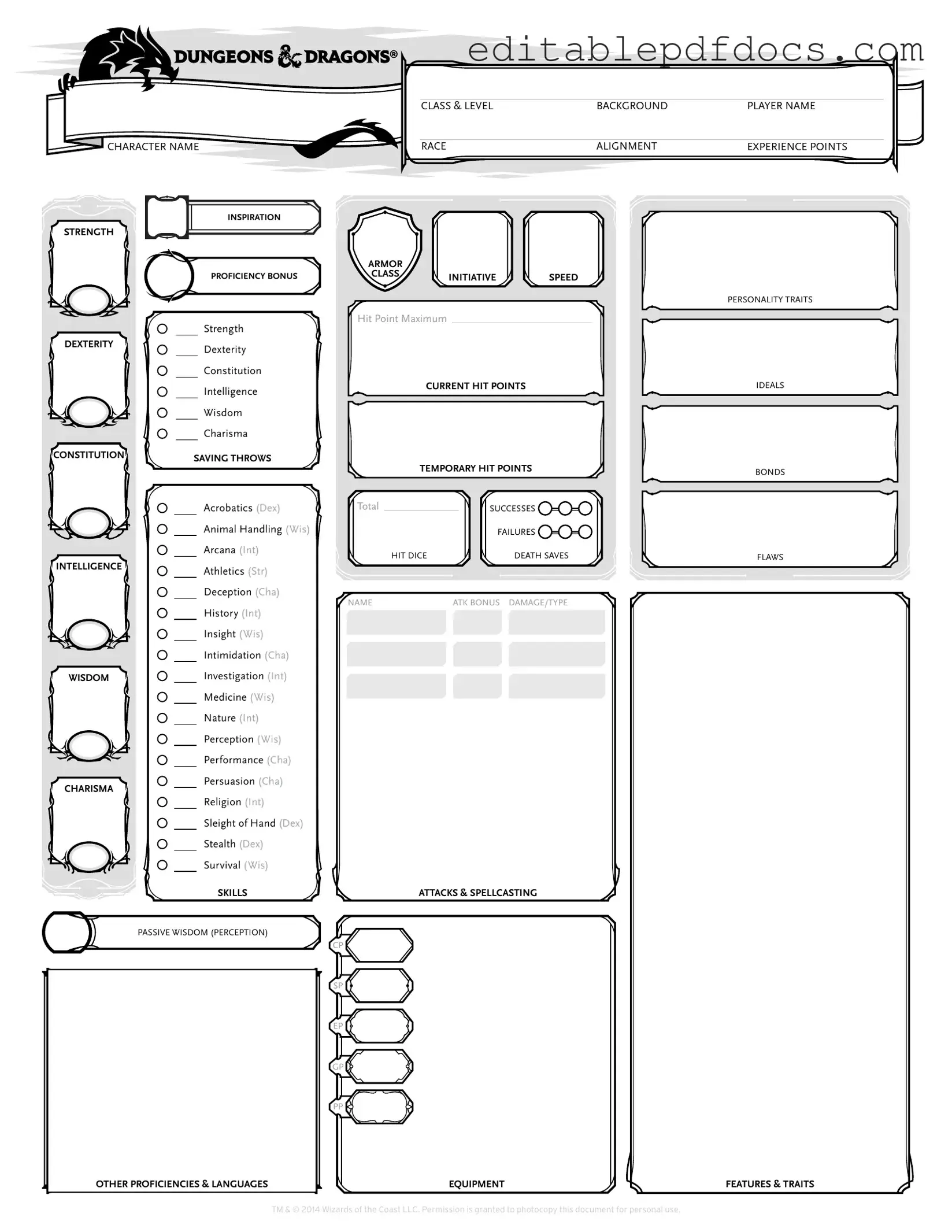Filling out a Dungeons & Dragons (D&D) Character Sheet can be an exciting yet daunting task. Many players, especially newcomers, often make mistakes that can impact their gameplay. Here are nine common errors to watch out for.
One frequent mistake is neglecting to read the instructions thoroughly. The Character Sheet comes with specific guidelines for each section. Skipping these can lead to misunderstandings about how to accurately fill in details. For example, miscalculating ability scores can affect a character's performance in critical situations.
Another common error is failing to properly calculate modifiers. Ability modifiers are derived from ability scores, and getting these wrong can skew a character’s effectiveness in combat and skill checks. Double-checking these calculations can save players from unnecessary frustration during gameplay.
Players often overlook the importance of background selection. Each background provides unique skills and proficiencies. Ignoring this aspect means missing out on valuable advantages that can enhance a character’s story and abilities. It’s essential to choose a background that complements the character's class and role in the party.
Many also forget to track hit points accurately. Starting with the wrong number can lead to confusion and could result in a character being prematurely knocked out during a session. Keeping a close eye on this detail is crucial for maintaining the flow of the game.
Another mistake is not updating equipment and inventory. As characters progress, they acquire new items and gear. Failing to reflect these changes on the Character Sheet can lead to inconsistencies and missed opportunities during encounters.
Additionally, players sometimes neglect to define their character's alignment. This aspect is fundamental to role-playing and can influence decision-making throughout the campaign. A clear understanding of alignment helps guide a character’s actions and interactions with others.
Inaccurate spell lists are another common issue. Spellcasters must ensure they record spells correctly, including their levels and effects. An incorrect spell list can severely limit a character's capabilities in critical moments.
Finally, many players forget to communicate with their Dungeon Master (DM) about their character choices. Collaboration can enhance the gaming experience and ensure that character backstories align with the campaign’s narrative. Open dialogue with the DM can lead to richer storytelling and more engaging gameplay.
By avoiding these mistakes, players can enhance their D&D experience, leading to more enjoyable and successful sessions. Take the time to review each section of the Character Sheet carefully, and don’t hesitate to ask for help if needed.
